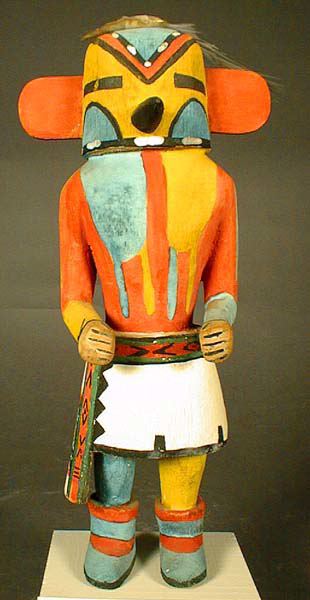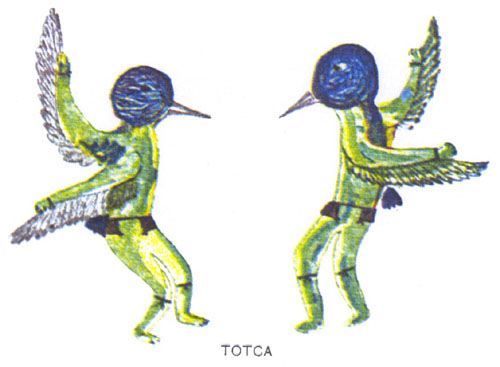HUMMINGBIRD
KACHINAS & TOTEMS
This page includes illustrations of kachinas, totems, and other hummingbird artifacts rendered by various Native American cultures.
"Kachina" means "spirit being." For centuries, Native Americans--especially in the Southwest--have been carving Kachina dolls as teaching tools for their children. In the "Kiva" (ceremonial room), tribal elders communicated with the spirits. What the spirits taught the elders was then illustrated to others through spirit Kachina doll carvings. Kachina dolls, like the human Kachina Dancer, are visual representations of the invisible spirits that assist in the rigors of life. There are Kachina spirits for every purpose--perhaps 900 documented kinds.
A "totem" is a picture, carving, or other rendering of an animal (or plant) used by Native Americans as a symbolic representation of an attribute or behavior. The emblem for a clan or tribe is often a totem that in some supernatural way watches over its members. The hummingbird totem represents beauty, how to heal with flowers, laughter, and enjoyment and protection of the environment.
If you know of other images that are not copyrighted, please send them to WEBMASTER.

A Hopi Tocha (Hummingbird Kachina), date unknown, carved and painted cottonwood root, University of Michigan Museum of Anthropology, Ann Arbor, Michigan USA. A Kachina of the Kiva Dances of winter and Soyohim Dances in the spring.

Plate XVI: "Totca, the Humming Bird, has a globular head painted blue, with long pointed beak. The dorsal part of the body is colored green, the ventral yellow. The rows of feathers down the arms are wings, by a movement of which the flight of a bird is imitated." Fewkes, J.W. 1903. Hopi Katcinas (drawn by native artists). 21st Annual Report of the Bureau of American Ethnology, Smithsonian Institution, pp. 93-94.
Up to Top of Page
Back to What's New?
Back to Hummingbirds & Culture
|

